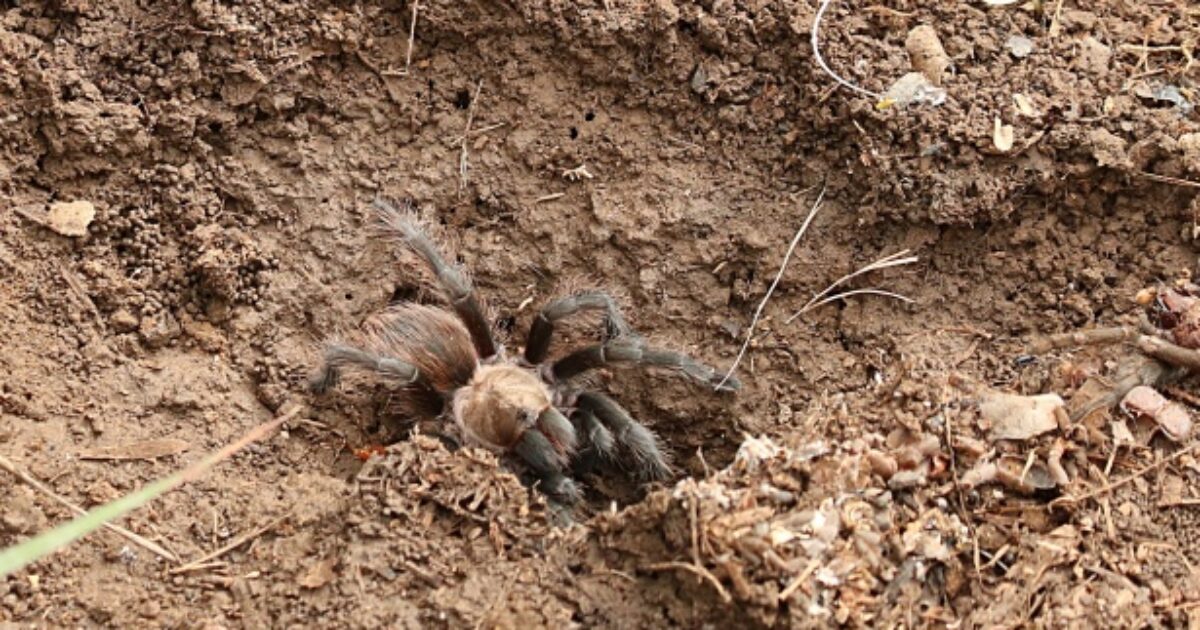88Tarantula mating season is almost here.
Thousands of the male spiders will emerge from their burrows in search for a mate, or die trying.
September through November is when you’ll most likely see them, particularly if you live in the Western or Southwestern United States.
“They generally wait for the first fall seasonal rain — they really respond to the late summer warmth and the increase in moisture,” Dan McCamish, a senior environmental scientist with California State Parks, told USA Today.
McCamish said you’re most likely to see them throughout the evening or early dawn.
“If you’re lucky enough you can sometimes see them in hordes crossing the roads at certain times of the year,” McCamish said.
While a tarantula bite can be painful, its venom isn’t toxic to humans, according to the National Wildlife Federation.
Still, McCamish recommends leaving a tarantula alone if you see one.
“It’s a wild animal — it doesn’t want to be picked up and loved and hugged,” he told USA Today. “In general the species is very docile, but if you were to handle one they could bite you.”
Tarantulas are roaming the U.S. as mating season begins. These docile, hairy spiders play a key role in nature — just don’t startle them. They can jump as high as two feet! pic.twitter.com/tNch7DiW2B
— USA TODAY (@USATODAY) July 29, 2025
If it faces a threat, a tarantula will put its weight on its hind legs and expose its fangs, according to the National Wildlife Federation.
If that doesn’t deter the threat, the tarantula may shoot urticating hairs at its attacker.
Although the barbed hairs would merely irritate a human, they can kill small animals.
“In truth they’re gentle, ecologically valuable animals,” McCamish said. “Mostly they’re interested in escaping from confrontations — especially with something they know could squish them.”
McCamish said if you see one walking about, it’s likely a male, as the females usually wait near their burrows for a mate.
In the winter, tarantulas burrow in a state of torpor, which is similar to hibernation. Then in the spring, they’ll emerge to hunt, but will stay near their holes until they fully emerge during the fall mating season.
“Generally, once the male has emerged, if it is unsuccessful in finding a mate during the season, it will likely die due to exhaustion,” McCamish said.
After the male has mated, he’ll often scurry away, as sometimes the female will eat him, according to National Geographic.
Females will guard the eggs and sperm in a cocoon for six to nine weeks before the baby tarantulas hatch — usually 500 to 1,000 at a time.
Tarantulas mainly populate arid or semi-arid regions of the U.S., including in Arizona, Florida, California, Texas, New Mexico, Nevada, Utah, Colorado, Oregon, and Washington, according to USA Today.
“If there are tarantulas living somewhere, you can generally assume the habitat is functioning,” McCamish said.
This article appeared originally on The Western Journal.
The post Arachnophobes Beware: ‘Hordes’ of Tarantulas Set to Swarm Parts of US appeared first on The Gateway Pundit.











